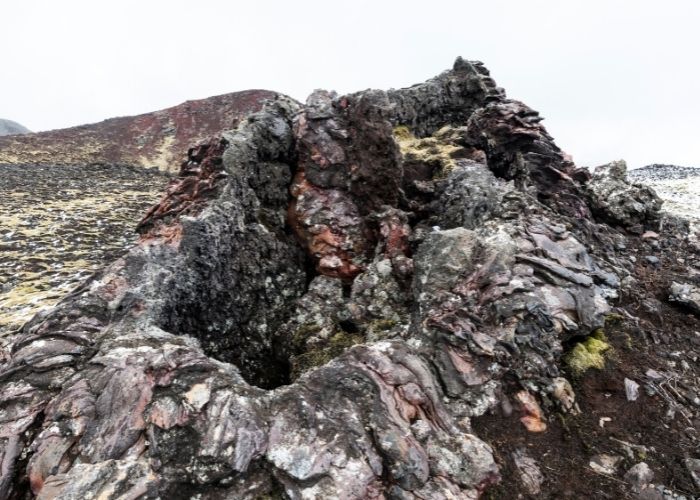LA PALMA – It was the Spanish settlers in the southwest of the United States who coined the term: malpaís. It means bad ground; the lasting effects are the lava forms a rough and stony surface that is difficult to walk on. And that, according to the experts, is what will remain on the island of La Palma after the lava flows.
A barren terrain full of badly eroded rocks that are difficult to cross. A practically uninhabitable ground ‘where the only easy thing to do is break a leg’, assures José Fernández, professor at the Spanish National Centre for Biotechnology, the CSIC.
Malpaís
The image of ‘malpaís’ is more common in a volcanic archipelago like the Canary Islands. The Malpaís de Güímar and the Malpaís de La Rasca are found on Tenerife; the Malpaís de La Corona, on Lanzarote, is the largest, covering an area of 1,425 hectares. Fuerteventura has the Malpaís de La Arena. They have now become tourist attractions on the islands.
Lasting effects
In the case of La Palma, more than 100 hectares of land have been swallowed by the lava. And the Cumbre Vieja volcano continues to spew lava through new vents. On their slow descent towards the coast, the lava flows. Tons of glowing rock, leave a trail of destruction that changes the orography, the relief of the area, forever. The island could increase in size and height.
The activity of the volcano changes the relief of the island and deforms the ground where the vents and fissures are located. According to Miguel Ángel Morcuende, director of Pevolca, the Canary Islands volcano emergency plan, the total deformation of the surface near the eruption zone is already 25 centimetres, which indicates ‘that an eruption is continuing’.
As Pablo J. González, a researcher in volcanology at the CSIC in La Laguna (Tenerife), explained to news site NIUS, the island may grow in height and increase in size. ‘A new pyroclastic flow, made up of waves of solid or semi-liquid lava, gas, rocks and ash, will most likely emerge, which may reach 100 or 200 metres in height, and the lower area, where the lava flows, will become a few metres higher,’ he predicts.
Possibility of a new lava delta
The volcanologist does not exclude the possibility of a ‘new lava delta with the entrance of the lava flows into the sea’, a low-lying platform close to the coast and just below the cliff. ‘If it were similar to the 1949 eruption, about half a kilometre to the sea would be extracted,’ he concluded.
Housing and schools
Professor Fernández of the CSIC and Complutense University of Madrid also suspects that the island of La Palma will grow. How much, he cannot yet foresee. Building on the barren ground of a malpaís is ‘much, much more expensive’ and the lava must be allowed to cool. It is therefore very necessary that a housing solution is found for the people who have become homeless’.
He foresees that “houses, schools and entire neighbourhoods will have to be relocated”. The reclamation of the lava-covered area will take a long time, and land that was previously cultivated will not be able to be reclaimed for a long time. It may be possible to use it for tourism, but urban development there seems complicated.
Expanding knowledge to limit damage
Volcanologist José Manga agrees that ‘the affected area is ruined, it is horrible, a natural disaster and it will not be possible to cultivate anything. That is pure poverty’.
Fernández added: “The only good thing that will come out of all this is that we will learn a lot about volcanism in the Canary Islands so that we can act better in future situations and achieve our objectives: prevent victims and minimise the damage. What is clear is that it is impossible to ‘control the power of the lava and try to channel it’. This was tried years ago with Etna but it was a failure. If we can foresee the events, we can reduce the number of injured to zero. For the time being, ‘there have been no casualties on La Palma’, says the expert. ‘Let’s hope it stays that way’.


